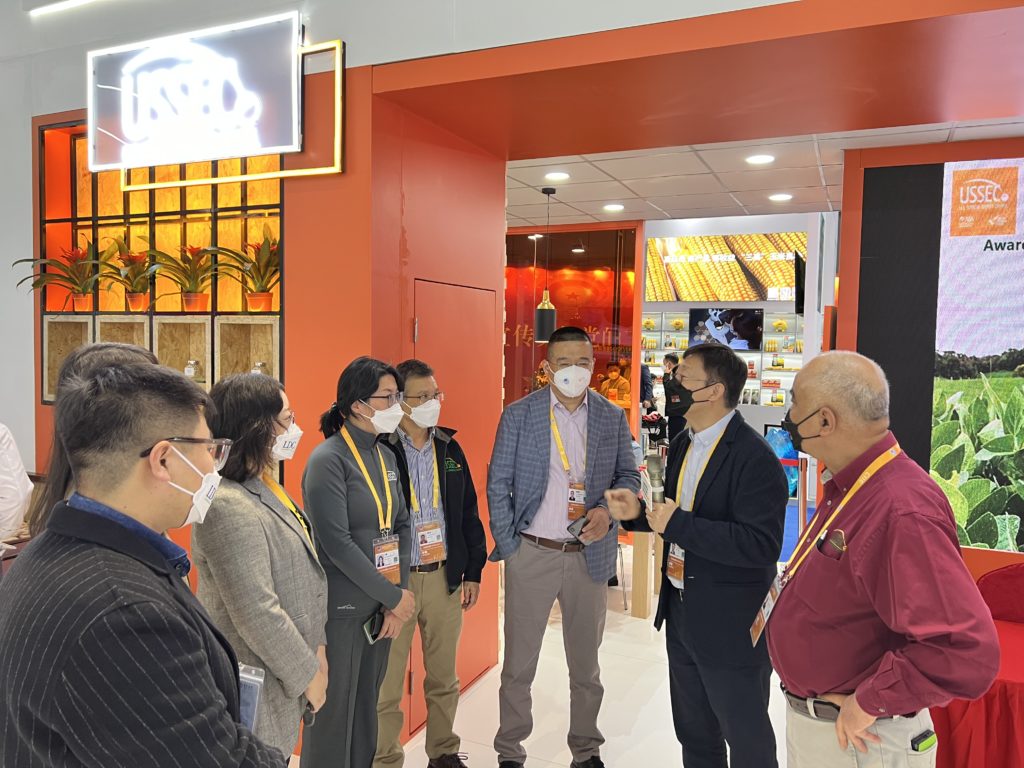
USSEC strengthened relationships with customers of U.S. Soy in China during the 5th China International Import Expo (CIIE), held in Shanghai in early November. The event allowed USSEC to highlight the sustainability and low carbon footprint of U.S. Soy, with support from the soy checkoff.
“Participation in CIIE amplifies USSEC messages,” says Xiaoping Zhang, USSEC regional director for the Greater China region. “We demonstrated the contributions of U.S. Soy to current and future challenges.”
Zhang delivered a presentation on the quality, reliability and sustainability of U.S. Soy during the pre-CIIE conference held by the China Chamber of Commerce of Foodstuffs and Native Produce (CFNA) and the local government. During CIIE, he shared a global soy market outlook, which included information about how the sustainability of U.S. Soy differentiates it and delivers economic and social benefits to customers. In addition, five key media outlets interviewed him.

“CIIE provided opportunities to share the competitive advantages of U.S. Soy and the continuous efforts and contributions made in the past 4 decades, since its entry into China in 1982,” he notes. “In addition to mainstream media interviews, we shared livestreams from our booth once again this year."
Event leadership invited USSEC to attend high-level CIIE symposiums on food security and trade facilitation, as well as closed-door meetings. This participation greatly enhanced relations and U.S. Soy branding with associations and industry contacts.
USSEC’s presence supported a preference for U.S. Soy. For example, the USSEC booth hosted meetings that built and strengthened relationships with industry stakeholders and networked with a wide variety of USSEC members and Chinese customers. Exporters like ADM, Bunge, Cargill, Scoular and Perdue and ag input suppliers like Bayer and Corteva explored business opportunities with new and existing customers at the USSEC booth.
The USSEC team showcased the sustainability of U.S. Soy through on-site cooking demonstrations that featured fish, shrimp and eggs fed with Soy Sustainability Assurance Protocol (SSAP)-certified U.S. Soy and fried in U.S. soybean oil. Two aquafeed millers signed memorandums of understanding to use the Sustainable U.S. Soy logo on their products


“USSEC has committed to leverage CIIE for more exposure and publicity of the advantages of U.S. Soy,” Zhang says. “After harvest it’s the peak season for U.S. Soy. CIIE is a good time for Chinese importers, processors and end-users to learn more about U.S. Soy products. Through these efforts, we hope to further link the industries of both countries, creating an environment for cooperation.”


This story was partially funded by U.S. Soy farmers, their checkoff and the soy value chain.
